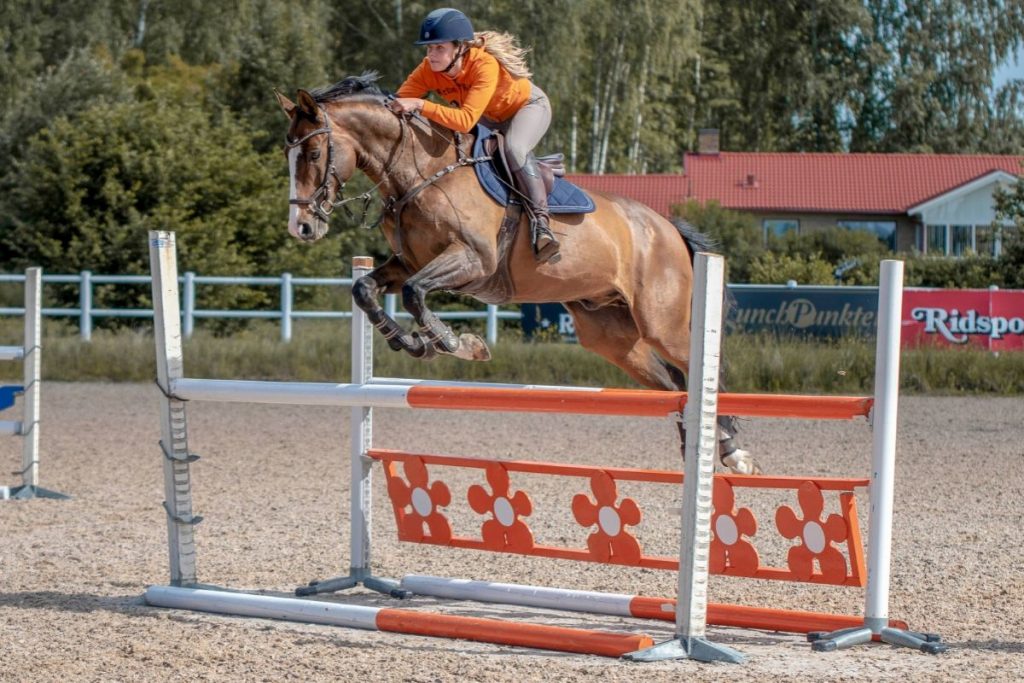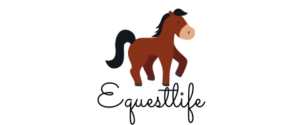Whether you are a pleasure rider who loves to take your horse out on the trails, a jockey that races your horse for sport, or a dressage rider that competes in shows, having a well-fitting saddle is critical to the happiness, comfort, and welfare of your horse.
When the saddle fits properly, your horse can move naturally and be pain-free, providing you with an optimal performance. Unfortunately, many riders are either unaware that a saddle is not fitting properly or do not understand how to correct an ill-fitting saddle (sometimes both) which ends up causing your horse to act out.
One of the questions that many riders ask is, does my saddle hurt my horse and if so, what can I do about it?
The answer to this is, yes, your saddle can definitely hurt your horse if it isn’t fitting the horse properly. Picking the right saddle and size is important as a too narrow or wide saddle may cause injuries.
You should read on to find out how to fix the issue.
How Do You Tell If Your Saddle Is Hurting Your Horse?
There are several indicators that you can use to determine if the saddle is hurting your horse, with the first set of indicators being physical signs.
Is your horse moving down and away from pain?
When you approach your horse with the saddle in hand, do they react in such a way where they bow their head down and move forward?
This is them preemptively trying to get away from the pain they know is coming with the saddle.
The primary cause for this is that your horse’s shoulder cannot slide under the saddle’s “tree angle” properly.
The metal plating that is within your saddle (on either side) needs to be parallel with your horse’s scapula (shoulder) so that it can smoothly glide underneath the saddle when they are in motion.
Is your horse reluctant to move forward?
If he or she is reluctant to move forward, it is because they are getting pinched at the withers. This will manifest in your horse jumping hollow, refusing to go forward, or not engaging with you.
When the treewidth on your saddle is too narrow, it pinches the withers, so double-check that it is wide enough for your horse. Another way to check this is to see if there is a nice even contact underneath where your saddle sits by running a pen or pencil down underneath the saddle.
If it doesn’t fit or doesn’t run smoothly through, your saddle is pinching your horse’s withers.
Does your horse have tenderness or swelling on its spine?
Check your horse’s spine for tenderness, swelling, bumps, or deformities. If there are any signs of these, then the channel on your saddle is too narrow for your horse.
You do not want the channel to sit too harshly against the spine’s nerve endings as this will cause major discomfort.
Does your horse suffer from hock or stifle issues?
If you find that you have lead issues with your horse, it could be because your saddle is shifting to one side.
This can manifest in your horse letting down very quickly but refusing to pick up a canter or may always bend their head to one side. Have someone ride behind you to check for this.
Does your horse have areas of white hair, ruffled hair, or saddle sores?
When the billets are too far forward, they will pull the saddle forward with it, causing there to be no middle support.
This means that all of the pressure will be mounted on the back of the saddle, causing white hair to form or divets in the musculature.
You want your saddle’s billets to fall right in the girth groove of your horse because if they don’t, they will gore your horse.
Other signs that your saddle is hurting your horse include a sore and sensitive back, an overdeveloped bulge under the neck, a dip in front of the withers, a tight back, strained abdominal muscles, stumbling or tripping, pinned ears, or swishes tail/rolls eyes during saddling.
Behavioral signs include rearing or bucking during riding, chomping at the bit, head tossing, refusing jumps, does a full beat canter or pulls head down.
What Happens When a Saddle is Too Wide or Too Narrow?

When you turn your horse’s saddle over, there is a space between the panels that run the length of the entire saddle. This is called a channel or gullet and is designed specifically so that your horse’s spine has room to work and move.
If the channel of a saddle is too narrow for your horse, it will directly impact their movement by creating pressure on the spine. On the other hand, if the channel of the saddle is too wide for your horse’s narrow spine, the saddle will put direct pressure on their vertebrae.
If your horse has back muscles that slope dramatically away from the spine, the same guideline applies – get a narrower saddle.
How Do You Know When It’s Too Narrow or Too Wide?
The gullet on the saddle should completely clear the horse’s spine and the soft tissues that run along it. The panels of the saddle should rest on the horse’s long back muscles so that the muscle bears your weight rather than the spine.
Place your saddle onto your horse and stand at the back of them to see if there is light coming through the gullet/channel. If there is, you are in the clear
Can a Badly Fitted Saddle Cause Lameness?
Yes, a badly fitted saddle can cause lameness in several ways. The first is if the saddle’s tree angle is not parallel with the horse’s shoulder, the treewidth is too narrow, or the tree points are too far forward on the saddle, they can cause serious issues with the horse’s shoulder.
This is often due to the saddle shifting to the right, causing more pressure to be placed on the horse’s left side as the rider will lean to the left to maintain balance.
Doing this can cause a subluxation at the sacroiliac joint and pelvic intersection, thus causing a misalignment in your horse’s back and making them lame.
The second way is when the saddle is too long for the support area, it can cause your horse a lot of pain as it can shove up against the spine vertebrae. This will result in extra muscling at the affected area, resulting in a lot of pain for the horse and causing them to tighten up their back muscles.
When this happens, the tightening of the back muscles will pull the vertebrae out of alignment even more, causing direct trauma to the area. When this goes unnoticed, it results in lameness.
The muscles that play a role in lameness include the trapezius pars cervicalis (trapezius muscles in the neck), the trapezius pars thoracic (trapezius muscles in the thoracic area), triceps brachii, spinalis dorsi (the spine), longissimus dorsi, and the latissimus dorsi (lats).
If any of these get pushed, pressured, or moved outward in any way that is in an unnatural motion, this can cause lameness over time.
